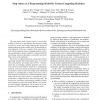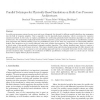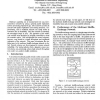266 search results - page 11 / 54 » Can Saturation Be Parallelised |
JMLR
2010
13 years 2 months ago
2010
Whereas before 2006 it appears that deep multilayer neural networks were not successfully trained, since then several algorithms have been shown to successfully train them, with e...
FCCM
2008
IEEE
14 years 1 months ago
2008
IEEE
The map-reduce model requires users to express their problem in terms of a map function that processes single records in a stream, and a reduce function that merges all mapped out...
CG
2008
Springer
13 years 7 months ago
2008
Springer
As multi-core processor systems become more and more widespread, the demand for efficient parallel algorithms also propagates into the field of computer graphics. This is especial...
EUROPAR
2007
Springer
14 years 1 months ago
2007
Springer
Computer systems are increasingly parallel and heterogeneous, while programs are still largely written in sequential languages. The obvious suggestion that the compiler should auto...
ICC
1997
IEEE
13 years 11 months ago
1997
IEEE
Multicast capability can be incorporated into any interconnection networks by using a general packet replication scheme previously proposed in [4]. The network can then be used fo...



